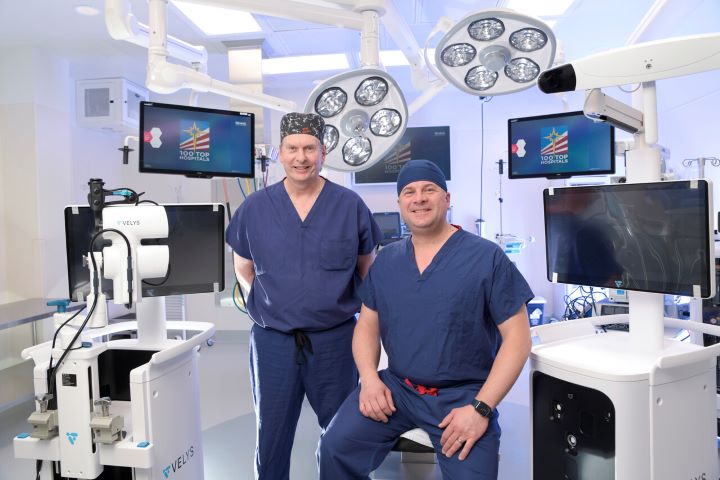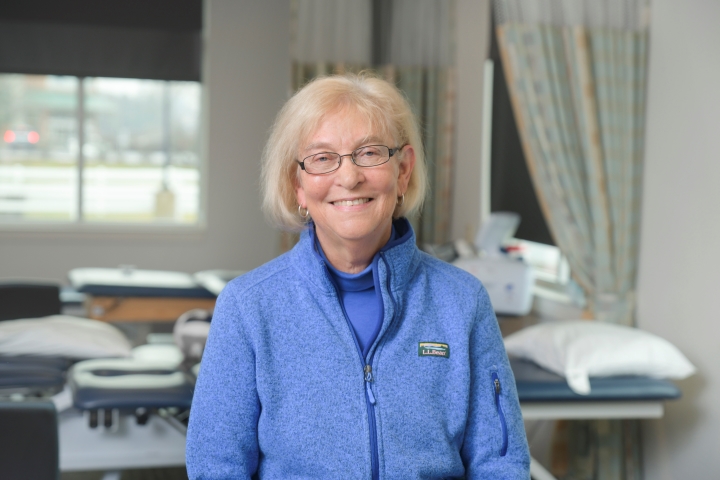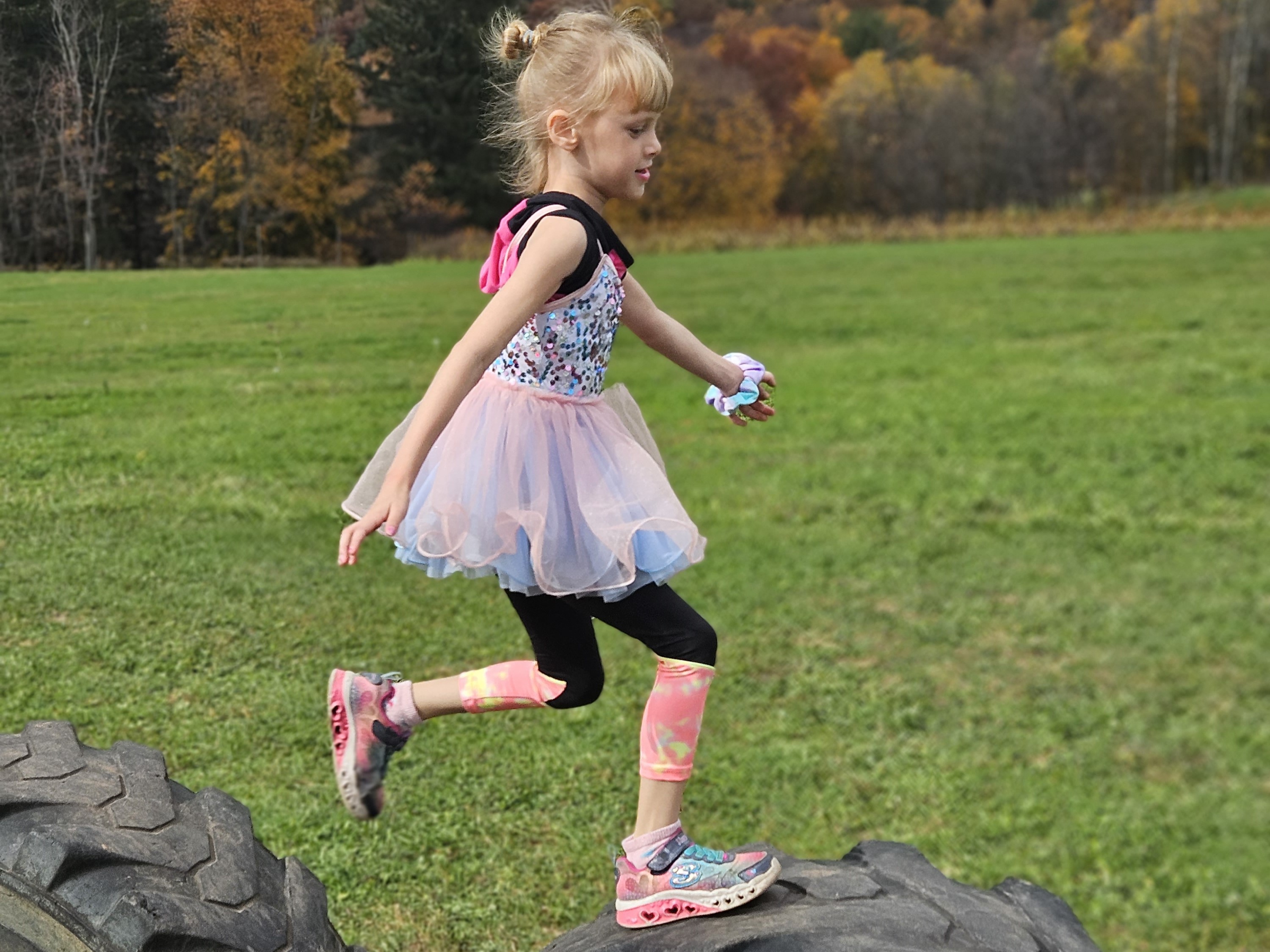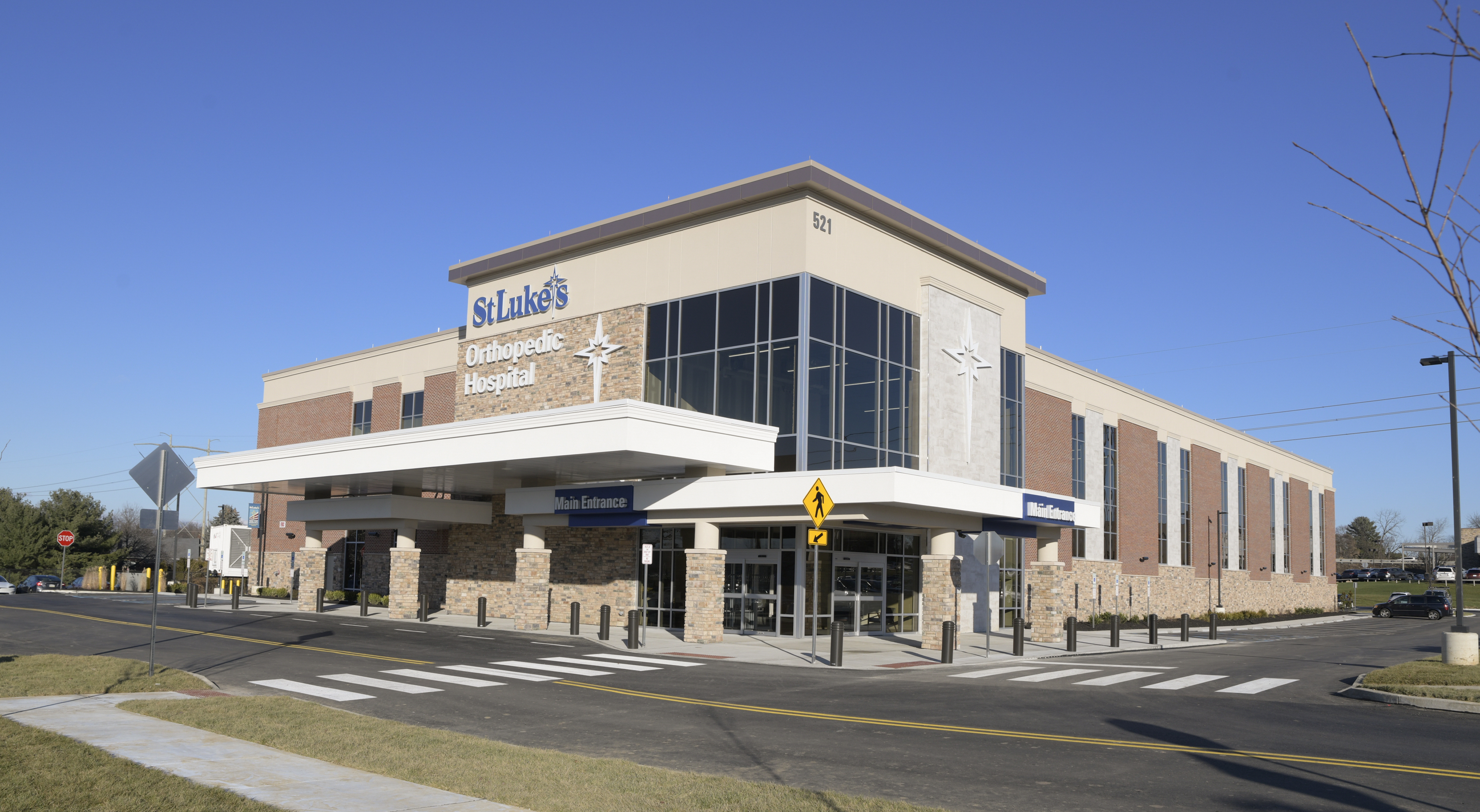News
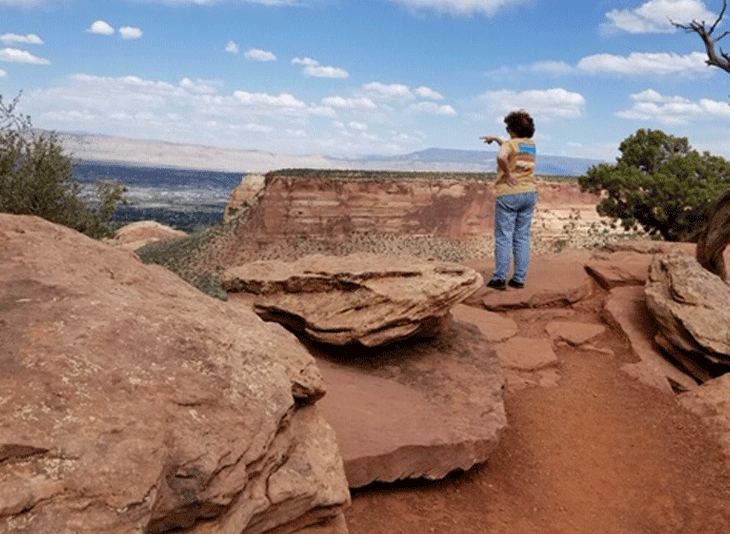
Breathing the thin air of high altitude at heights of 10,000-11,000 feet didn’t stop Quakertown’s Dana Egreczky from hiking.
But bunions did.
Dana, 69, a former teacher and non-profit executive, knew she had bunions for about eight years. The pain gradually got worse over time.
“It became much more evident when standing in high heels,” she said, “but eventually my hiking boots started bothering me in two very specific ways. I could see the bunion on my left foot starting to influence the second toe. The one toe became a hammer toe.”
The pain during hiking didn’t really kick in until the downhills, and became especially painful two years ago on the downhills of Canada’s Banff National Park.
“Oh boy, it was so bad I pulled my foot out of the boot and the bunion was so red it looked like a cherry tomato,” Dana said.
From that moment on, Dana was determined to take the right steps to correct her issue, and when foot and ankle specialist James Lachman, MD joined St. Luke’s Orthopedic Care in Quakertown, Dana’s prayers were answered.
Dana had bunions on both toes, but the left was far more painful. Dr. Lachman operated to correct her left foot first on the Monday after Thanksgiving, and then the right foot on Jan. 7.
Bunions are angular deformities of the big toe, occasionally forcing it cross over or under the second toe.
“It can make shoe wear very painful if it gets bad enough,” Dr. Lachman said. “Bunions occur on the inside of the foot. Hammertoe often cause pain and callus formation on the top of the lesser toes. When you put your foot into the shoe, the foot is wider because of the deformity. The bunion makes wearing shoes really painful.”
Dr. Lachman addressed Dana’s goals, which focused on being able to fit comfortably into hiking boots so that she could pursue her passion.
“We made that possible by fixing bunions on both sides,” he said.
In order to correct bunions, Dr. Lachman makes at least one cut into the bone to correct the angular deformity to balance the toe, and corrects soft tissue problems in the tendon, joint capsule and ligaments if necessary.
Recovery does not often require physical therapy.
“The patient typically does range of motion exercises in order to get the range of motion back so that the toe joint does not become stiff,” Dr. Lachman said. “It is often possible to let my patients walk right away after bunion surgery, and that’s pretty much all the rehabilitation they need.”
Dana was extremely pleased with Dr. Lachman and her results.
“He was a great doctor,” she said. “So enthusiastic. I had a lot of questions for him and he answered them all, no matter how many I asked. What I asked, he answered.”
“She was a great patient,” Dr. Lachman said. “She was motivated and came in with the right attitude. Her goal was reachable, to be pain-free in a hiking boot. She followed our protocol to a “T” and made a very routine recovery.”
Thanks to St. Luke’s extraordinary care, Dana has already been back on the trails and hitting the heights, traveling to national parks in Arizona, New Mexico and Utah to enjoy her love of hiking, and her feet aren’t getting in her way.
“I had not one ounce of pain,” she gleefully said.
